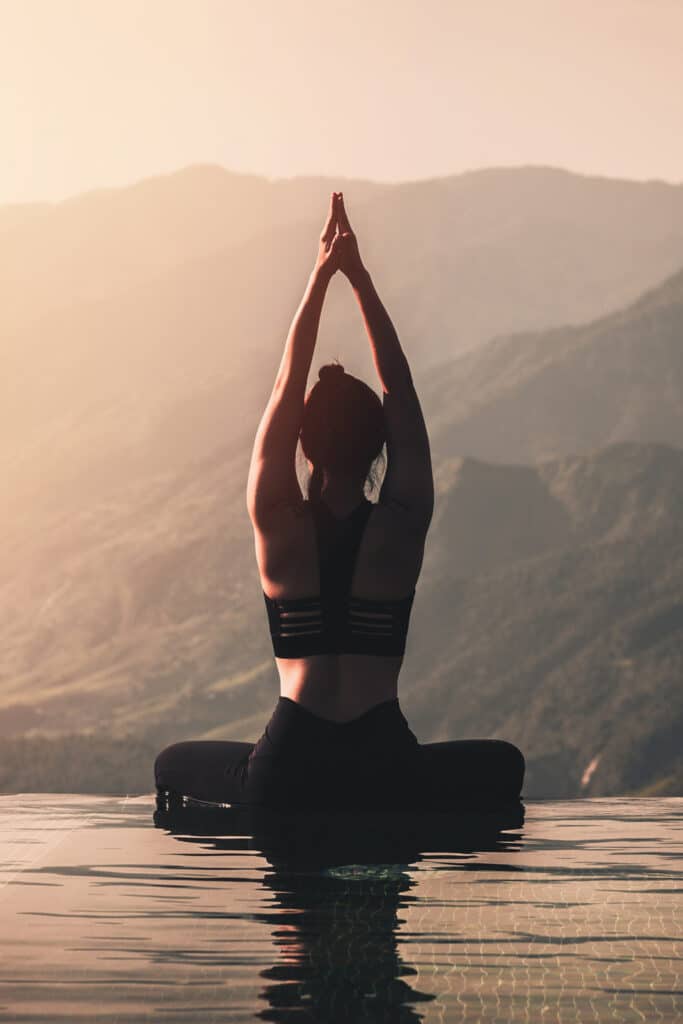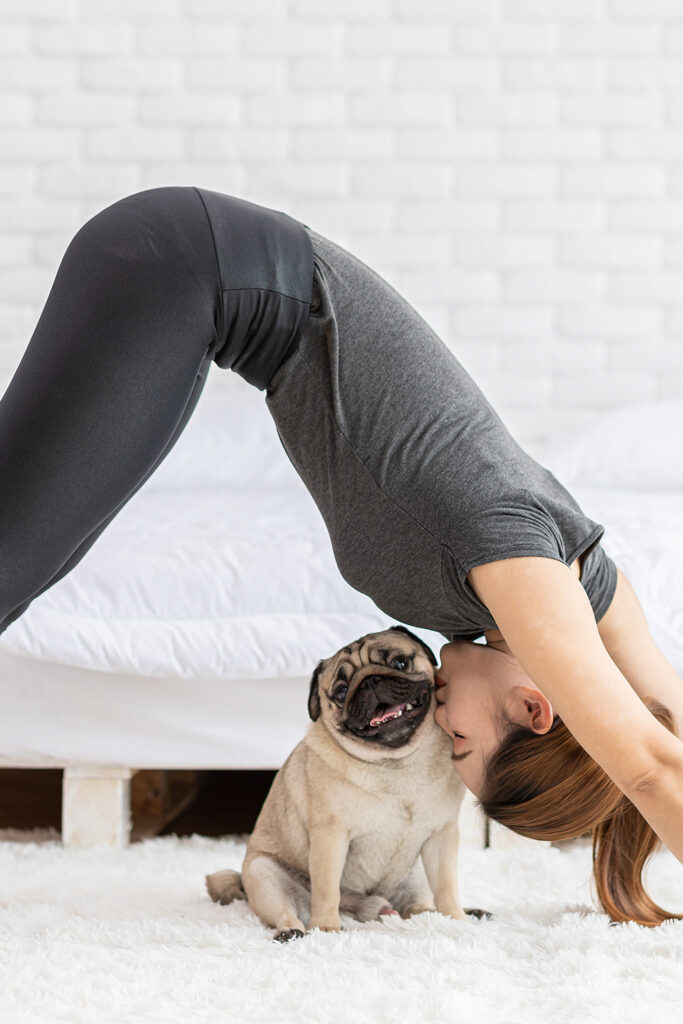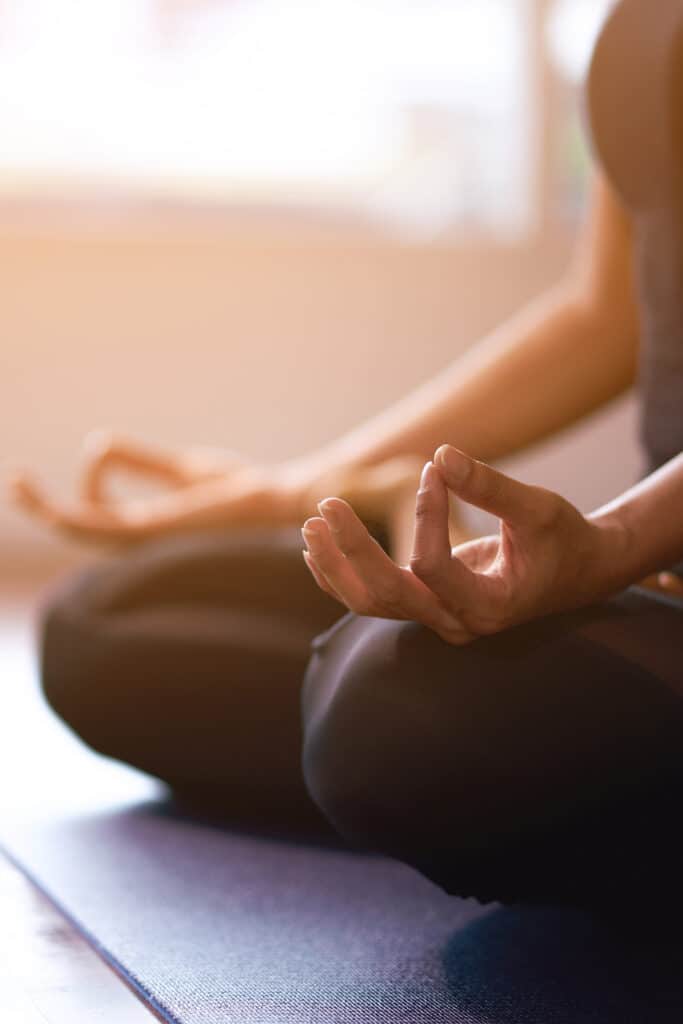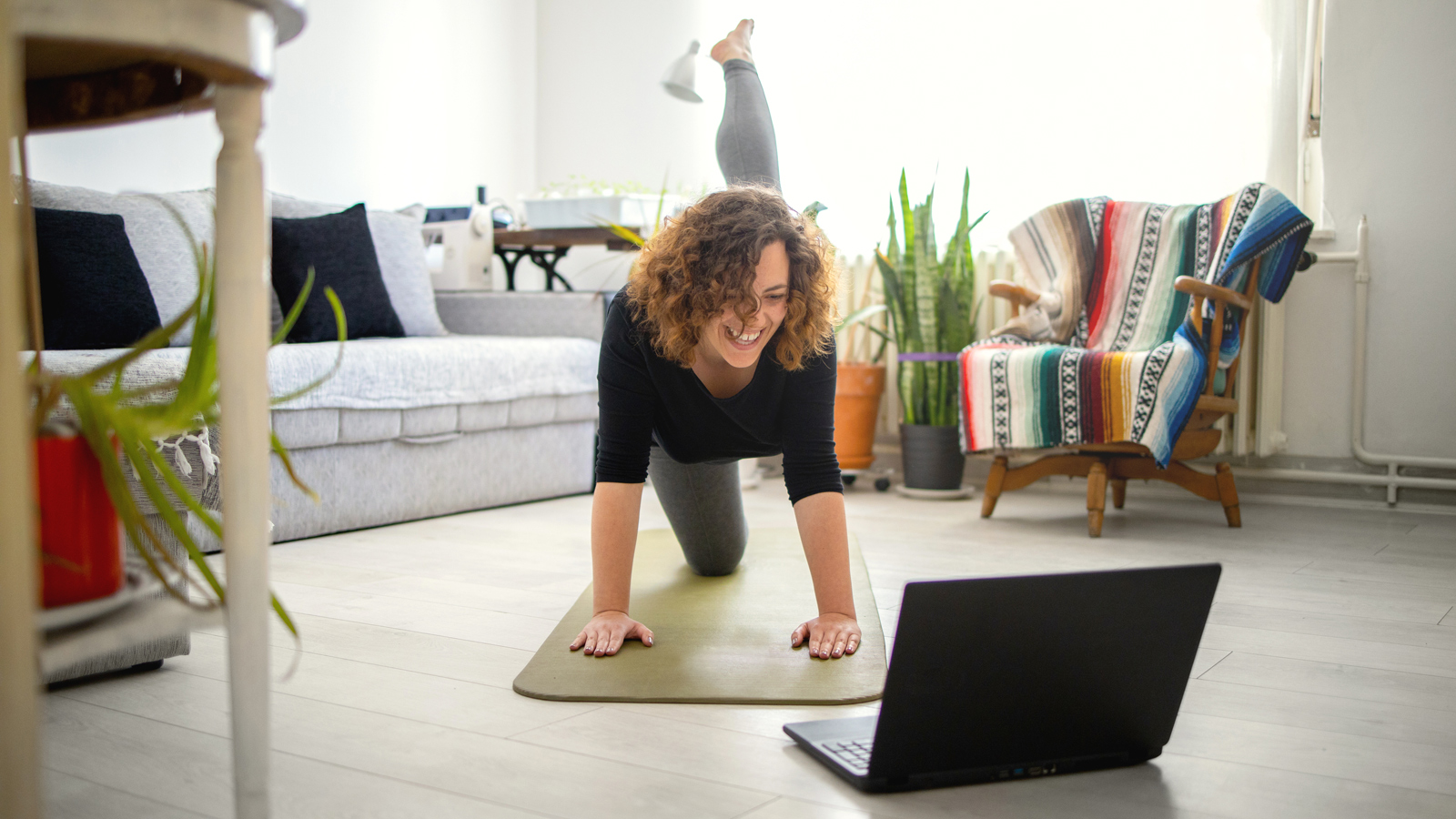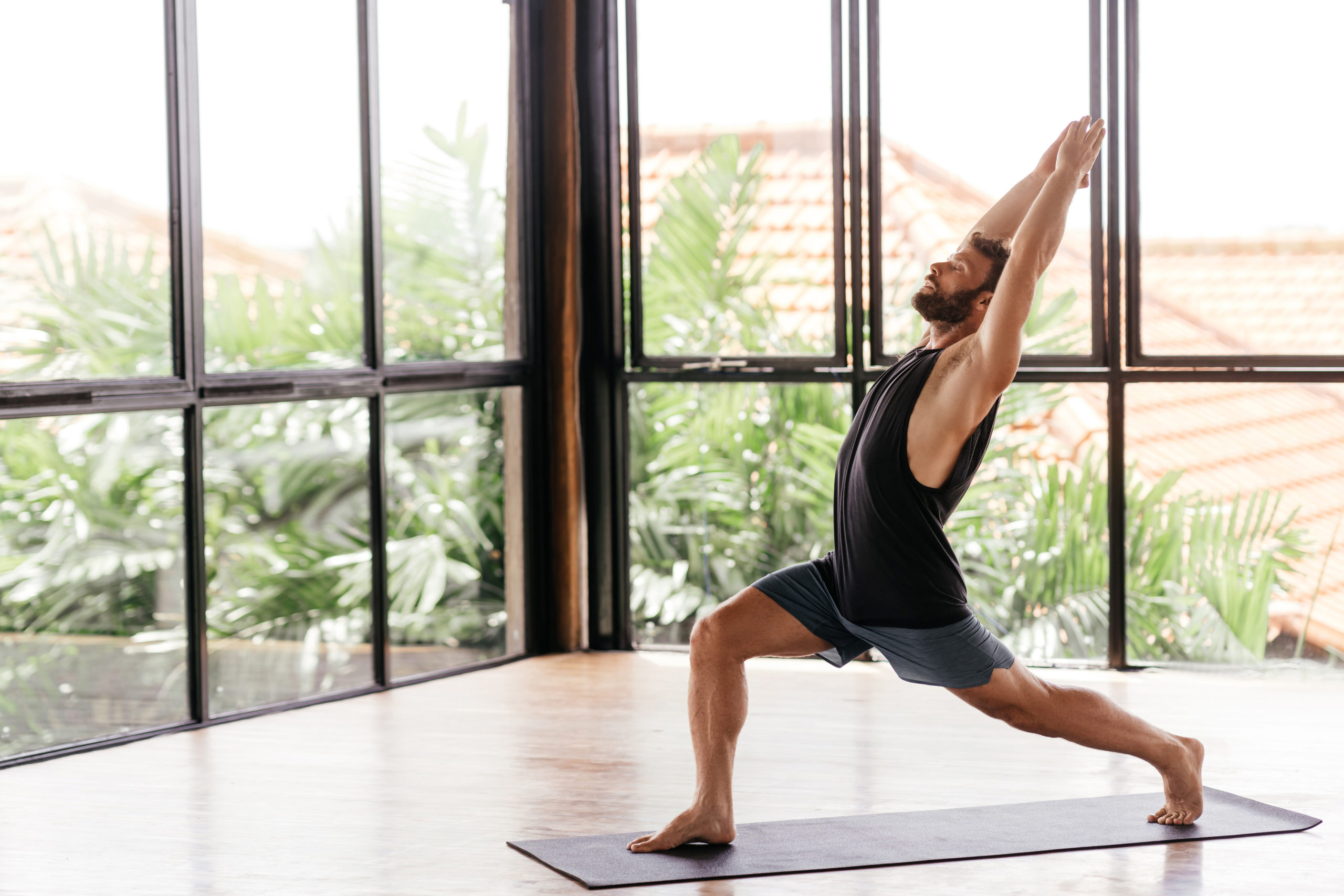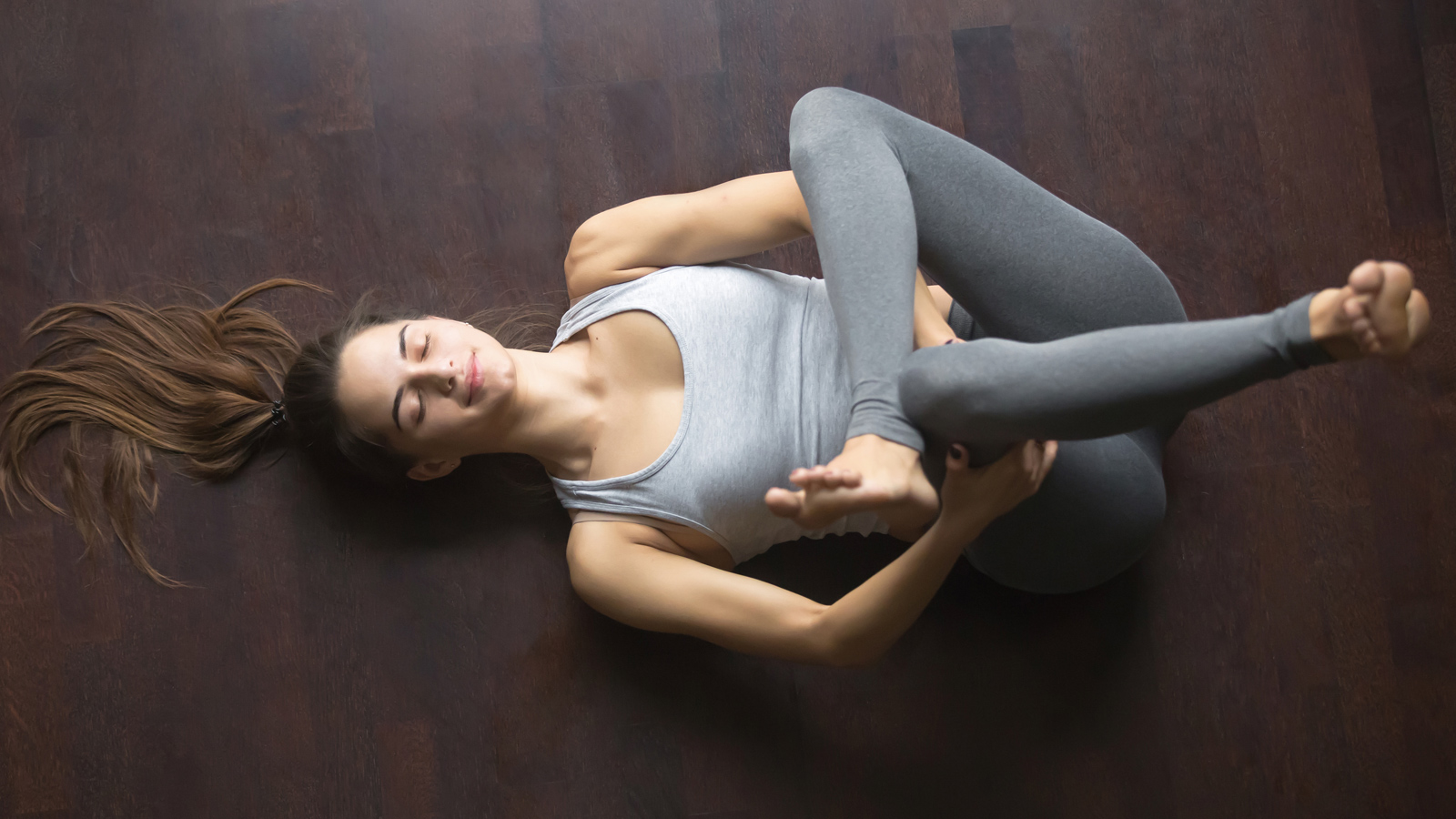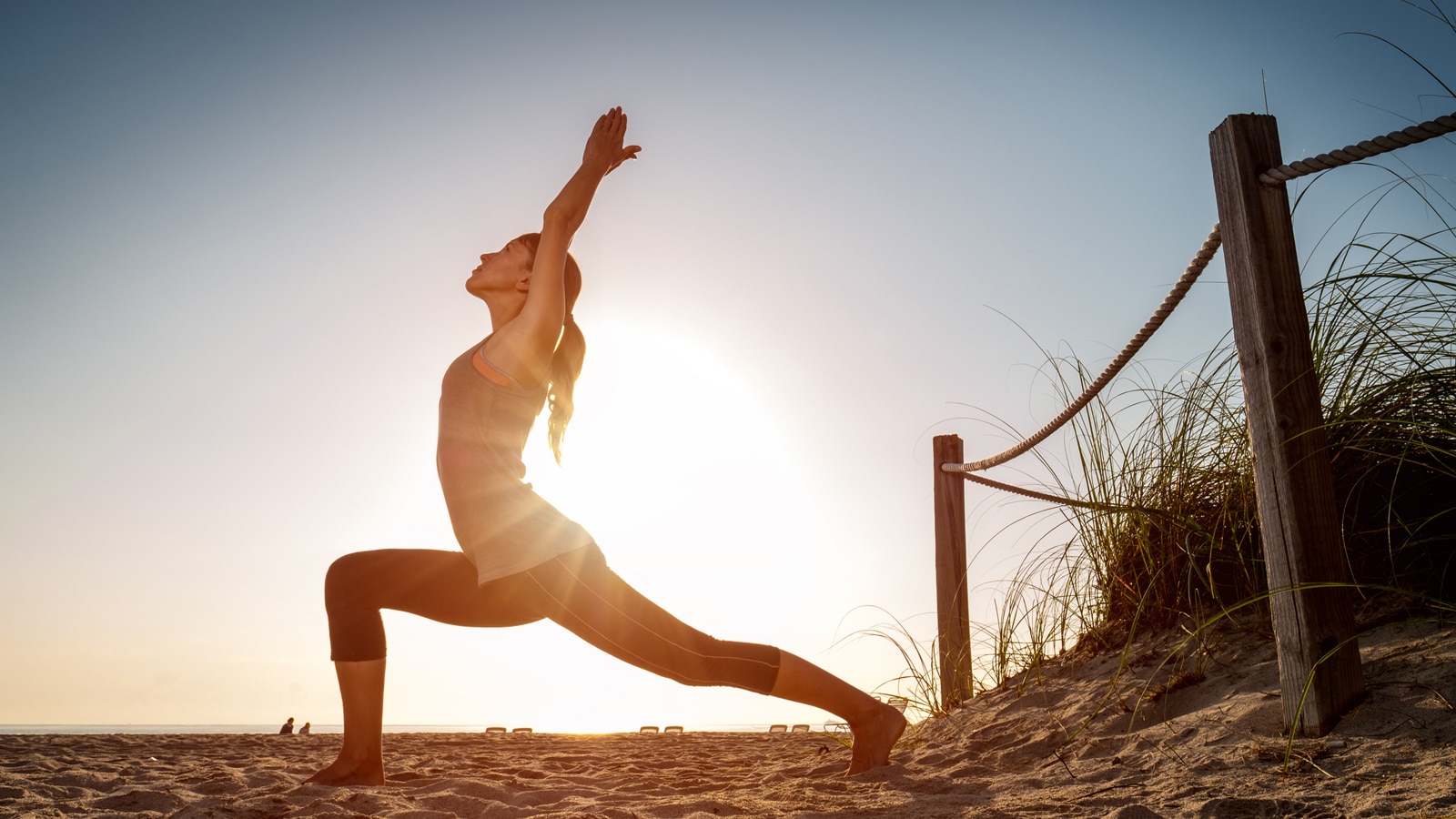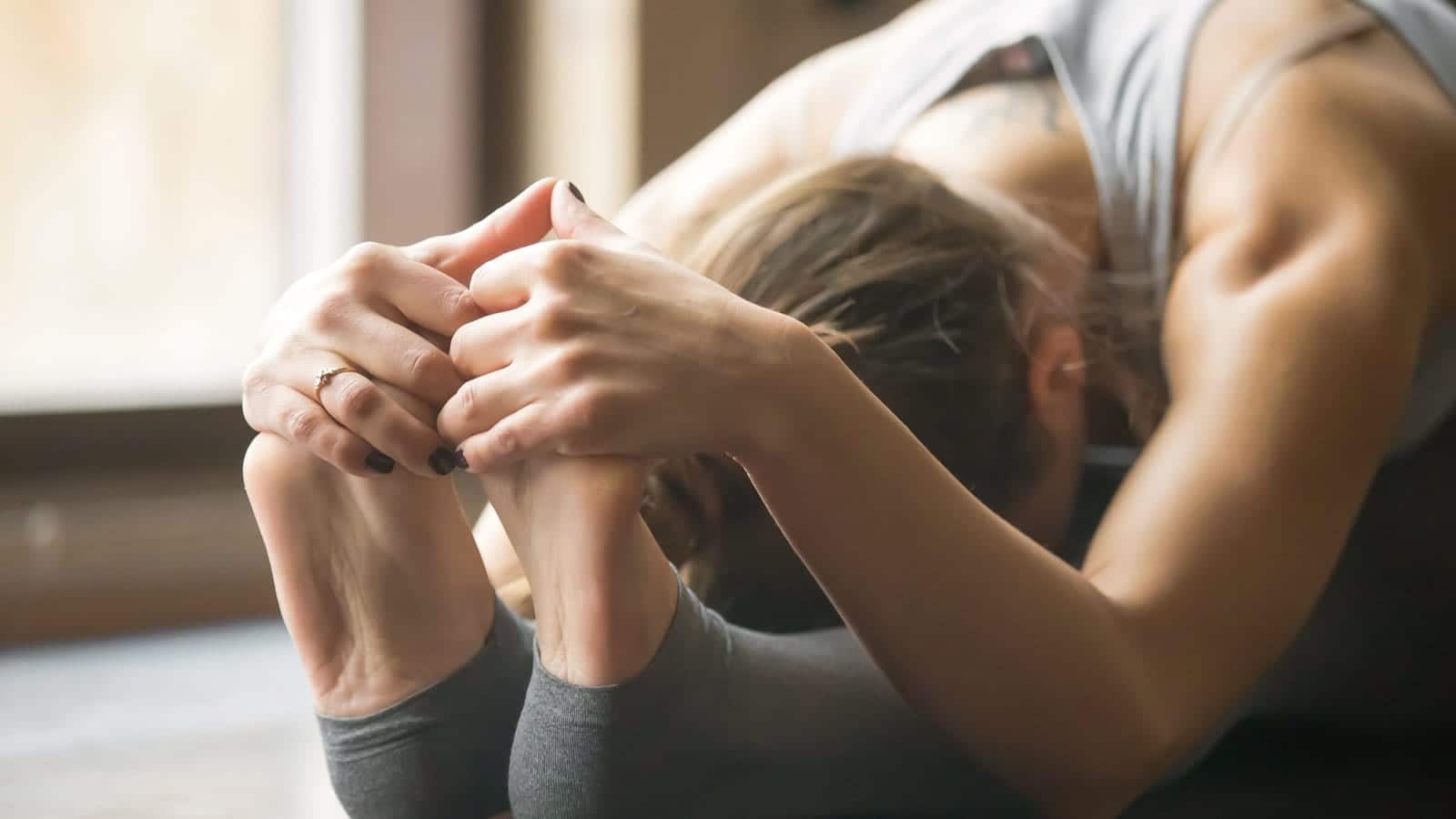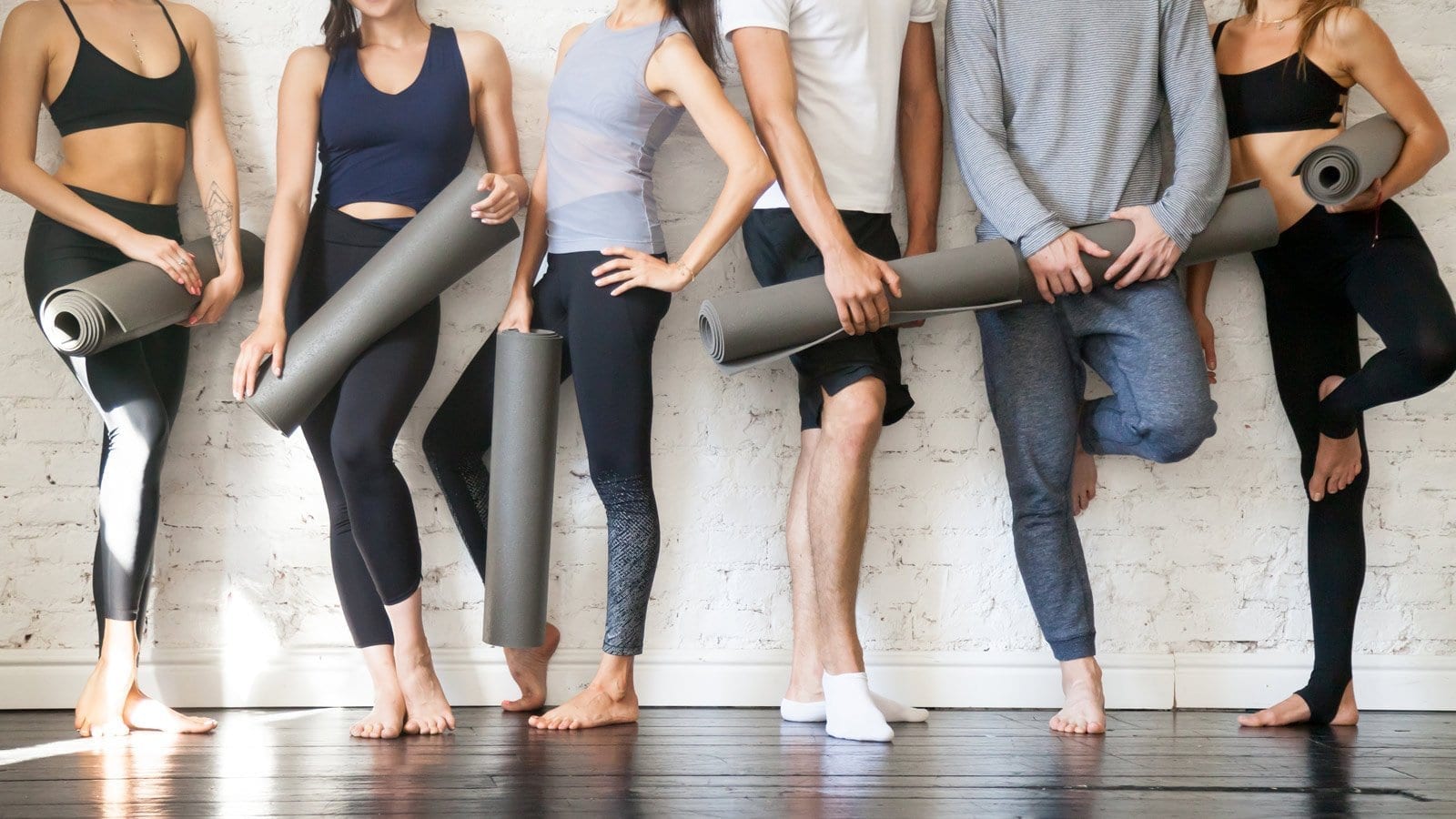How Often Should You Do Yoga? (Regular Practice Gets Results)
A little yoga every day, a vinyasa yoga class once a week, or a structured routine of power yoga sessions several times a week? Which is best? Just how often should you do yoga?
Read on to get some guidance. It starts with understanding why you’re doing yoga and what you want to get out of your yoga journey.

Why Do You Want To Practice Yoga?
Just like any other activity, yoga embraces a broad range of aspirations. It could be stress relief and a calmer mind, help with chronic pain and back pain, improve flexibility, weight loss, or build stronger muscles. There are so many reasons yoga is good for you.
Some people use yoga once a week for cross-training and for others, practicing yoga becomes an essential part of their lives. Often, people take up yoga to see results, such as losing weight and quickly realize yoga is so much more than a means to an end.
How much yoga and the type of yoga practice depends on what you want to achieve with your yoga journey.
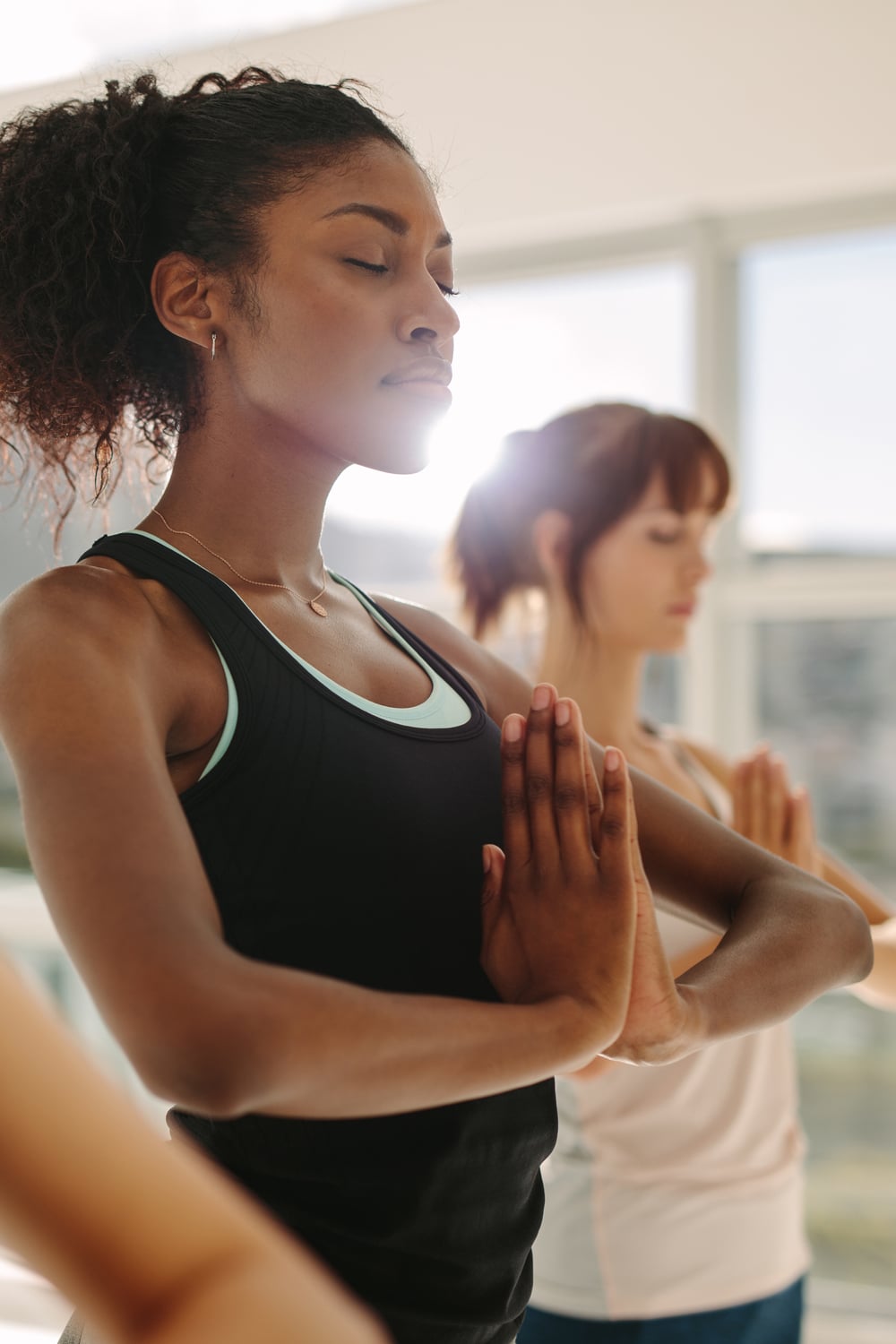
Practicing Yoga As A Beginner
Just because yoga is a great way to improve your flexibility, it doesn’t mean you can’t get injured. It’s essential to start slow and be patient with your body as it adjusts.
Instead of looking around the yoga studio and trying to copy everyone else, listen to your body. It will tell you what it needs. Yield and ease into poses.
Your progress as a beginner will depend on your current level of strength, flexibility, physical activity, and fitness level from other sports. But bear in mind that yoga is a great leveler. I’ve seen top athletes crumble in a yoga class!
When you practice yoga, it exposes your weaknesses. Stiffness from old injuries and muscle imbalances. It’s easy to be disheartened in your first few yoga sessions.
That’s why it’s a good idea for yoga beginners to establish a regular practice first: once a week, twice a week, or even a daily practice. There are so many benefits from yoga but most come from being consistent.
Focus on learning the correct yoga poses with a qualified teacher and start with beginner yoga classes. Try out different yoga styles to see what suits you best. No matter how strong or fit you are, it’s your first time on the yoga mat – don’t jump into an advanced class!
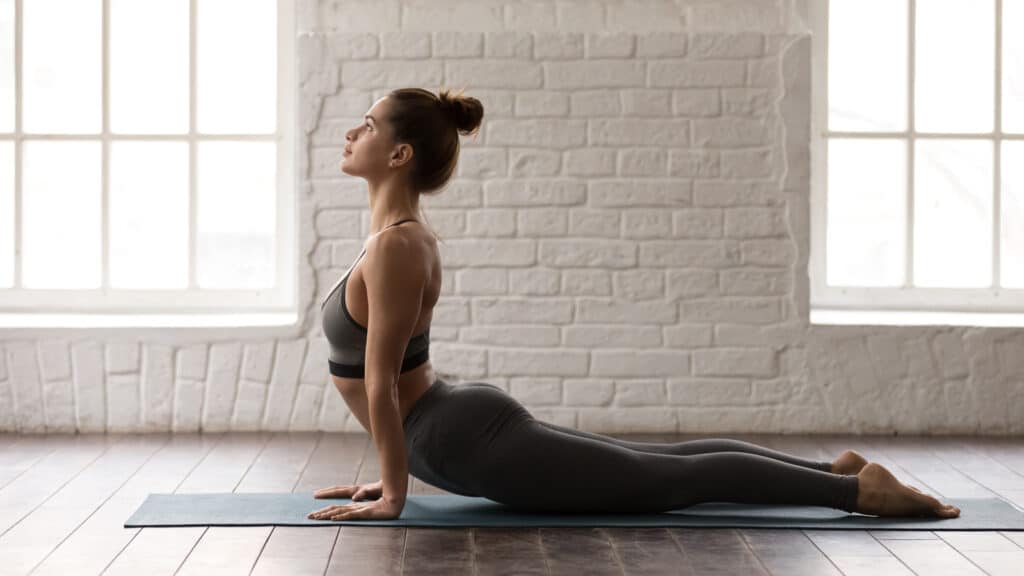
Yoga For Weight Loss
Losing weight is complicated. In simple terms, it’s just about creating a calorie deficit – eat less, move more. But in practice, hunger, stress levels, a slow metabolism, lack of sleep, and a negative self-image are just some of the valid reasons why people struggle to lose weight.
This is where yoga can help. A gentle yoga session won’t burn many calories, but I find it helps me tune into the needs of my body – I eat better, healthier food, avoid stress eating, feel better about myself, and sleep better – all helpful contributors to losing weight.
The style of yoga you choose affects your weight loss. With power yoga or flow yoga, your body will burn greater calories on the mat. These types of yoga also build muscle, which in turn helps to burn more calories at rest.
I recommend practicing yoga for weight loss at least three times a week if you want to see results. If you notice lingering muscle soreness make sure you have sufficient rest days to recover between sessions. Try alternating a power session with a restorative yoga session for best results.
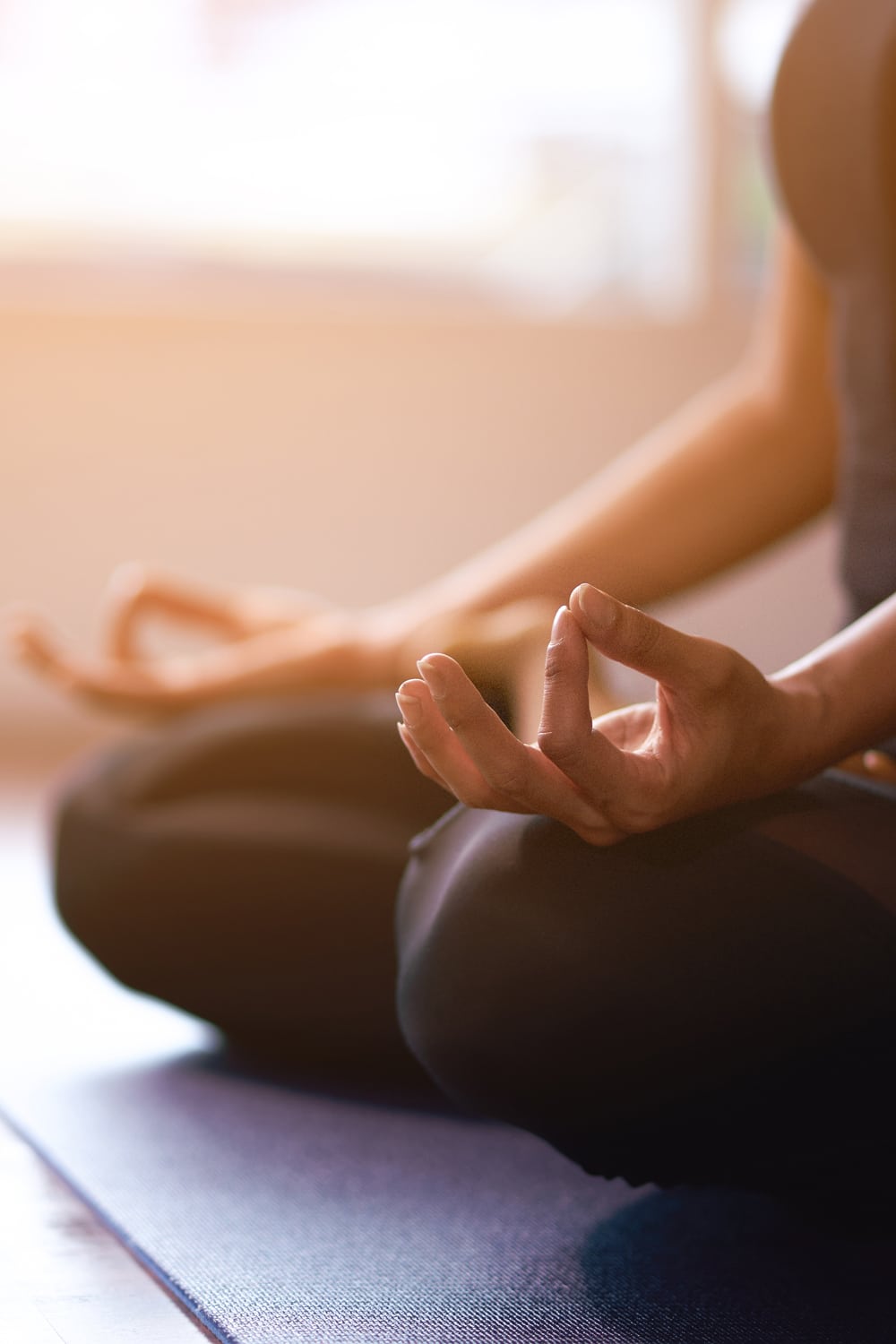
Yoga For Mental Health
Many people find yoga has a positive effect on their mental health. It helps to improve moods, reduces anxiety and depression, and can even help you sleep better.
After a busy day, I’ll use online yoga classes with gentle restorative yoga to help me unwind. Just a few minutes of yin yoga can have an immediate calming effect and help me sleep well at night.
Developing a daily yoga practice is ideal for stress and anxiety relief. It only has to be a short session, such as 10-15 minutes. But if that’s not possible, start with two or three yoga sessions a week.
Learn to tap into yoga any time you need it. Just a few minutes of yoga – breathing exercises or taking a restorative pose can make a big difference to how you feel.
Yoga For Flexibility
Everyone is different. Some people are so extraordinarily flexible it feels like they have an unfair advantage. But if you’re like me, it takes a big commitment to regular practice to see even small amounts of progress.
Practice yoga as much as you feel you need. This could be every day or even twice a day – it really depends on your goals.
If you’re using yoga for cross-training, for example, you’re a runner trying to improve flexibility and overcome muscle imbalances, one hour-long session a week will be enough to make a difference – two would be better. I can’t say it enough – it’s a consistent practice regime that counts. Add yoga sessions to your training schedule and stick to them.
A yoga routine for flexibility needs to go hand in hand with strength training – or you risk developing hypermobility and instability in your joints. Mix ashtanga, power, vinyasa, or even hot yoga with your yin yoga sessions to make sure you build strength and flexibility.
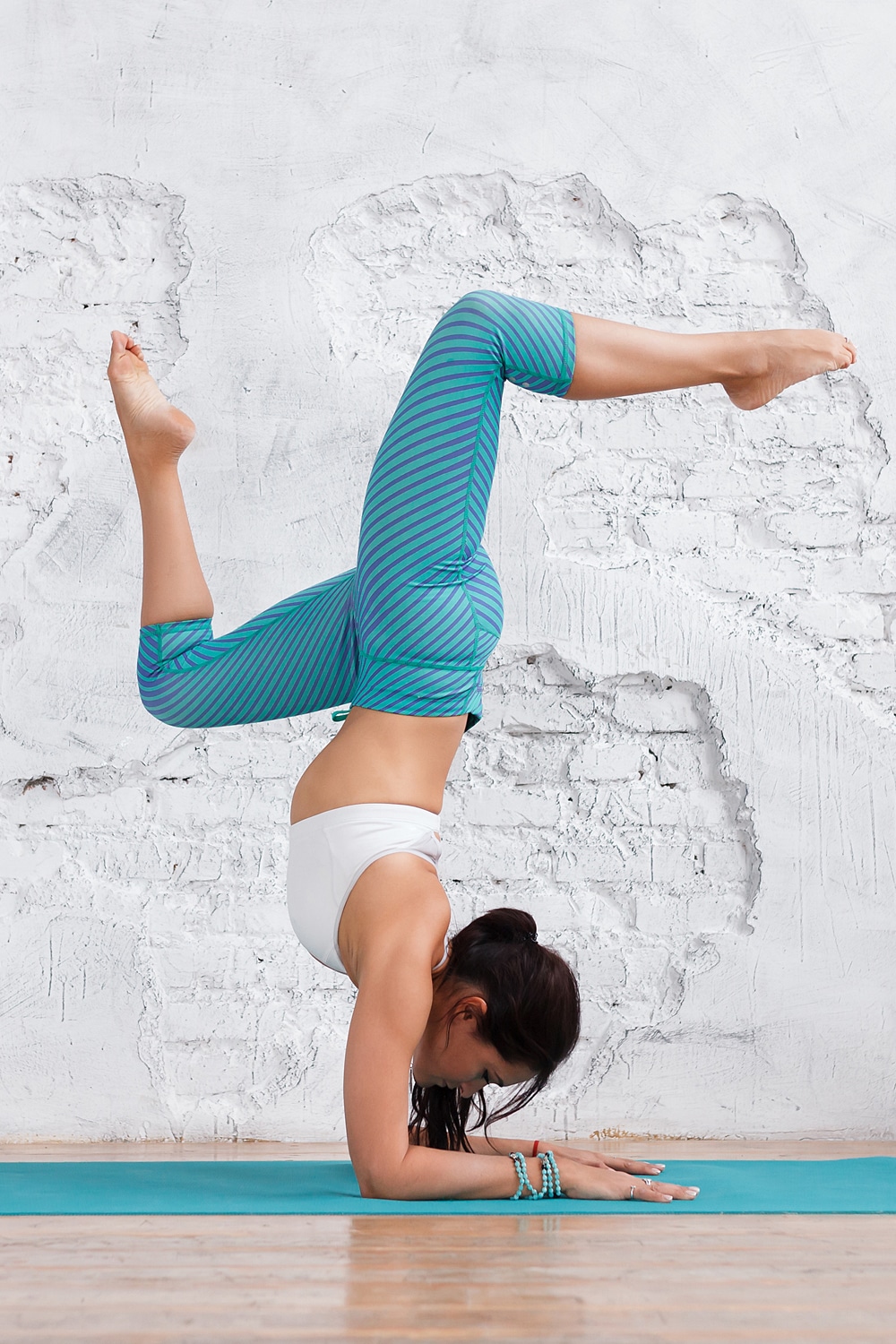
Practice Yoga For Strength
Building strength isn’t just about lifting weights in the gym. With yoga, you’re lifting your body weight, and that’s more than enough for most people to build strong muscles.
Again, building strength comes down to regular practice. If you want to build strength quickly, I recommend practicing three times a week. Start with an Ashtanga or Vinyasa class if you’re new to yoga. If you’ve been practicing for a while, try a power or hot yoga class. These types of yoga will also help with better balance – a major benefit of bringing yoga into your life.
Don’t forget to add some yin sessions to your practice. Yin helps to lengthen muscles and connective tissues – both of which are important for injury prevention and joint health.
Recovery time between sessions is really important, and so is technique. Find a good yoga teacher and make sure you recover sufficiently between sessions. Pushing through sessions with sore muscles is a fast track to injury.
If you can’t always find the time to train with yoga practitioners, I find supplementing my practice with online yoga classes really helps.
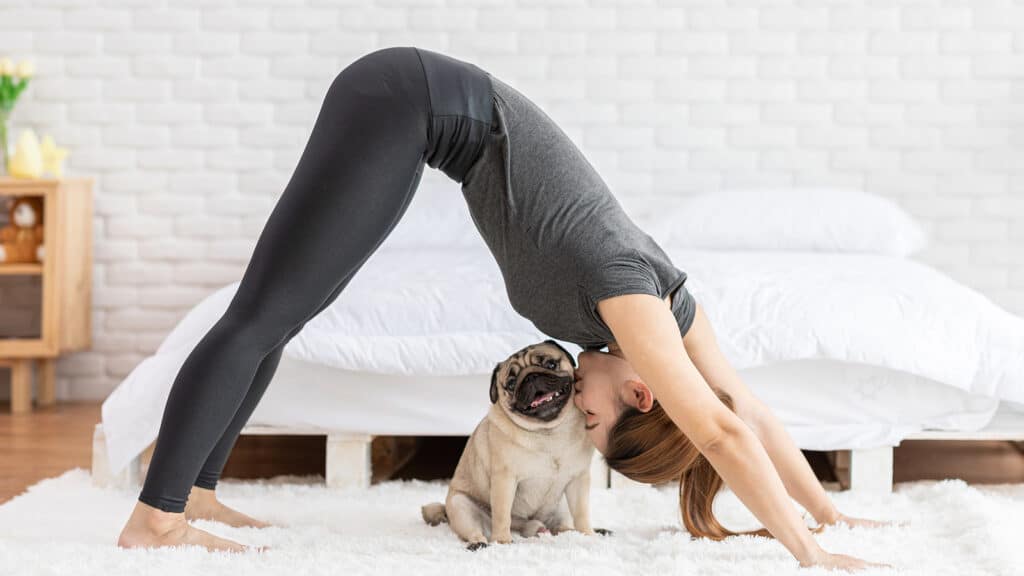
So, how often should you do yoga? The answer is different for everyone. Some people choose to practice a few times a week to get results, while others may benefit from short sessions every day.
Tap into yoga when you need to in times of stress or anxiety, use it to build strength for other sports or commit to several sessions a week to master more advanced yoga poses. The choice is up to you!
Related post: What To Wear To Yoga Class and What Do Men Wear To Yoga?
